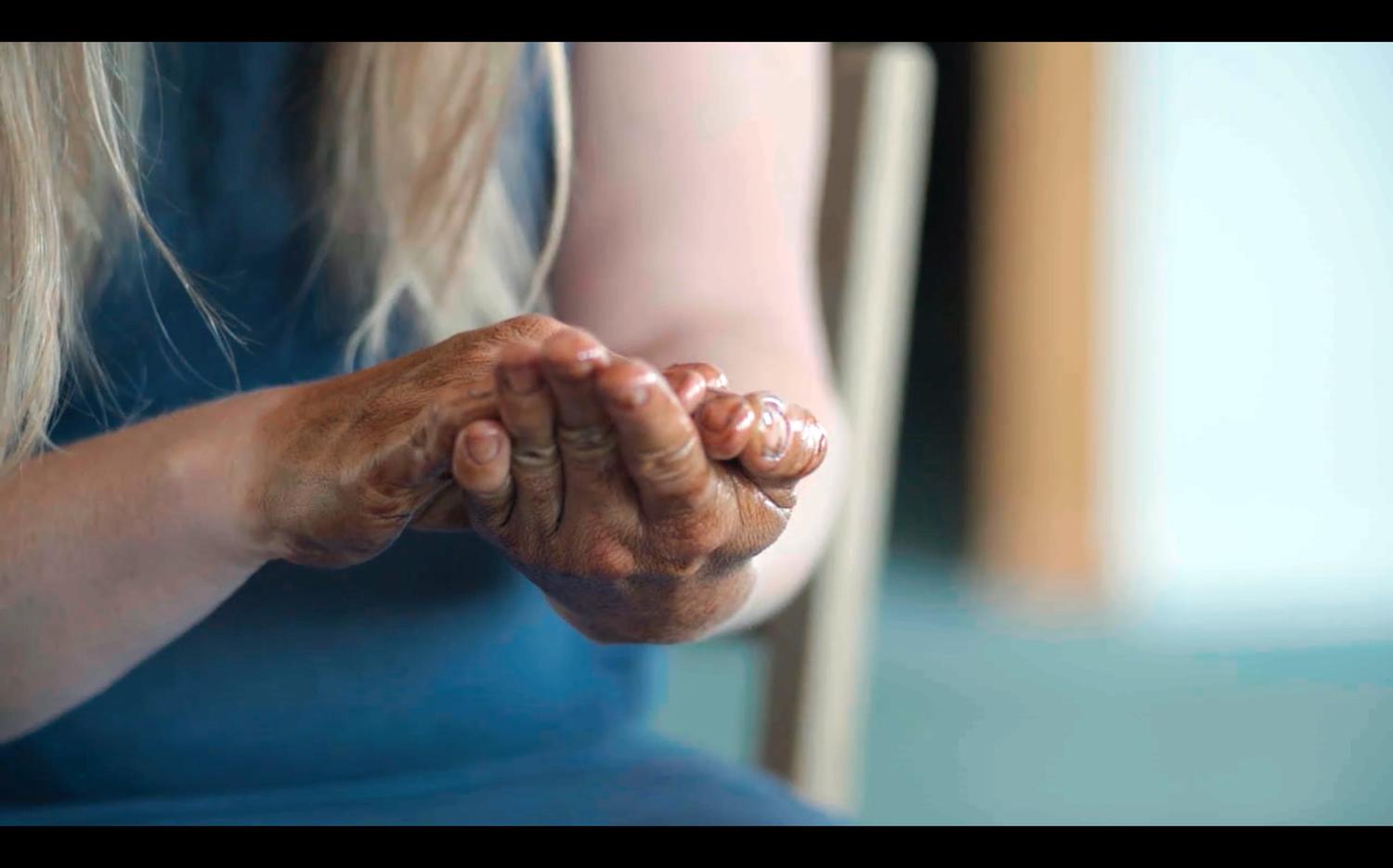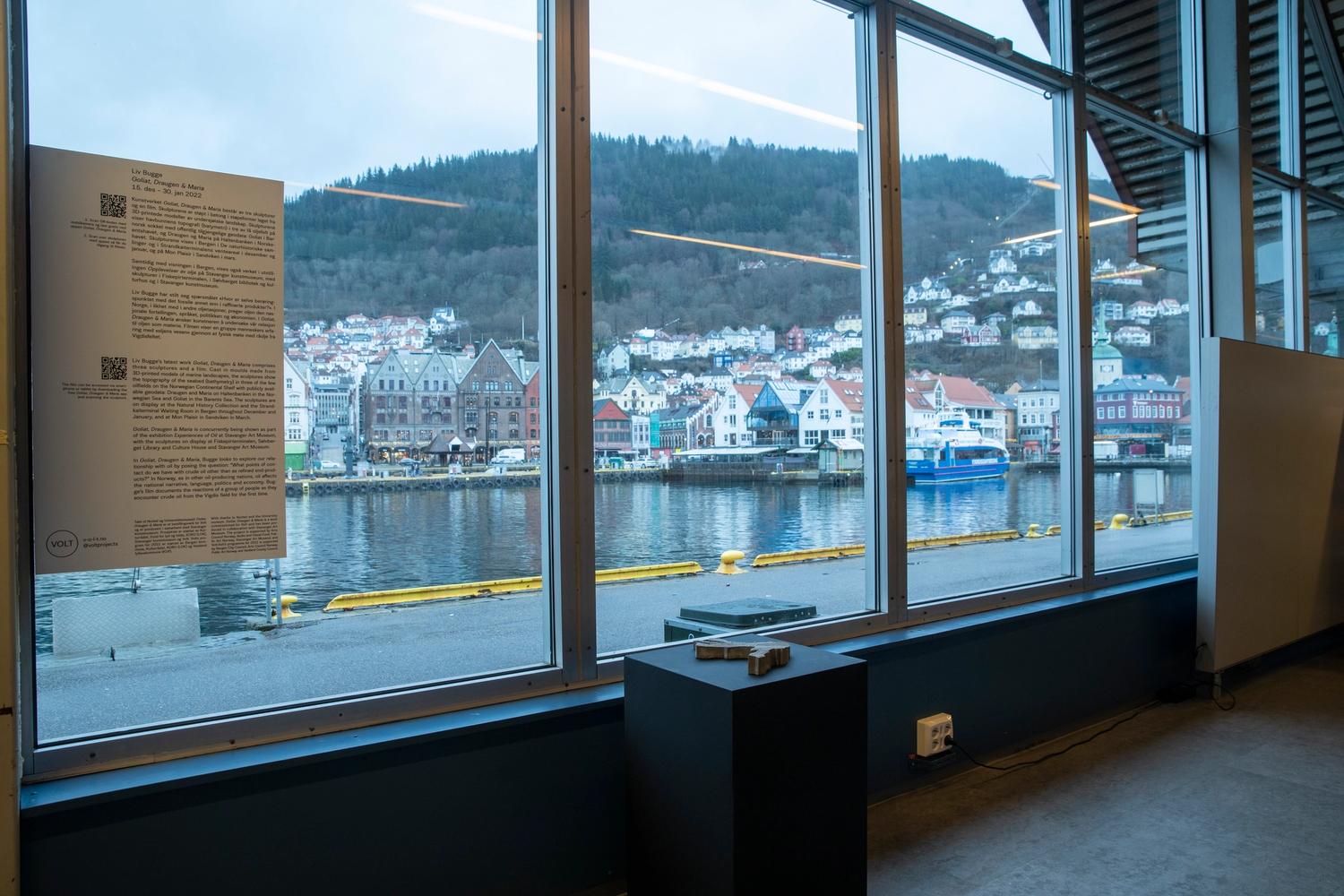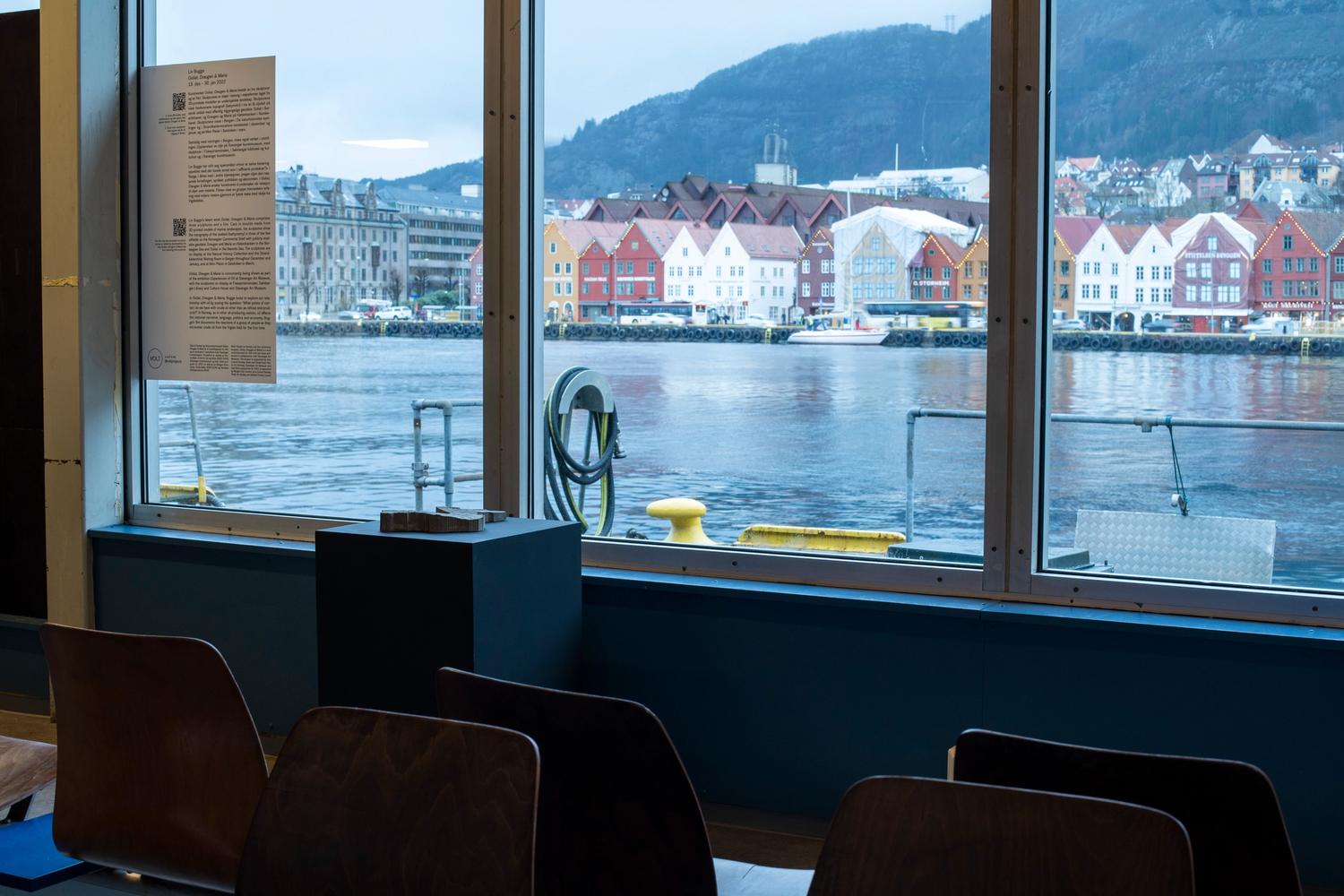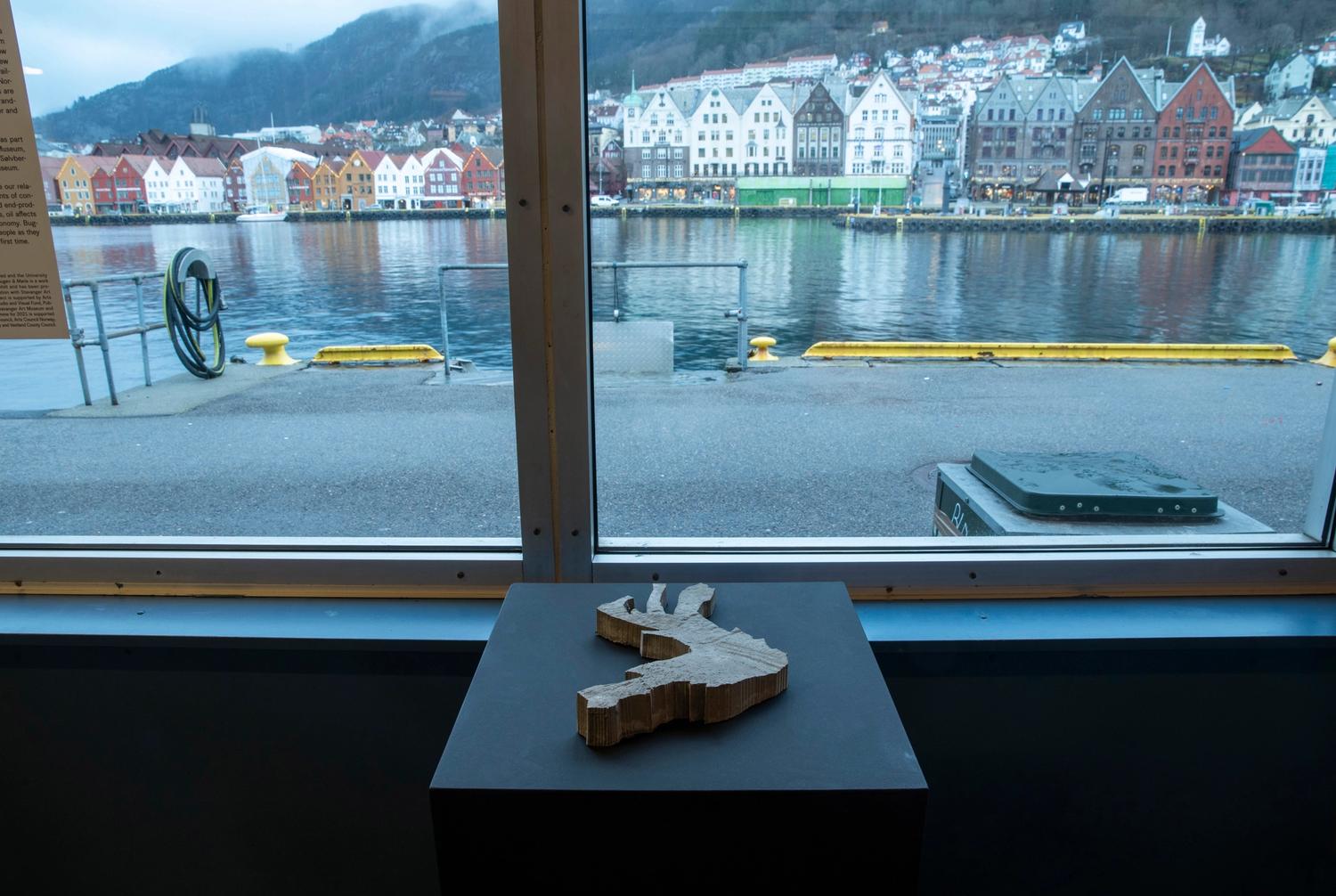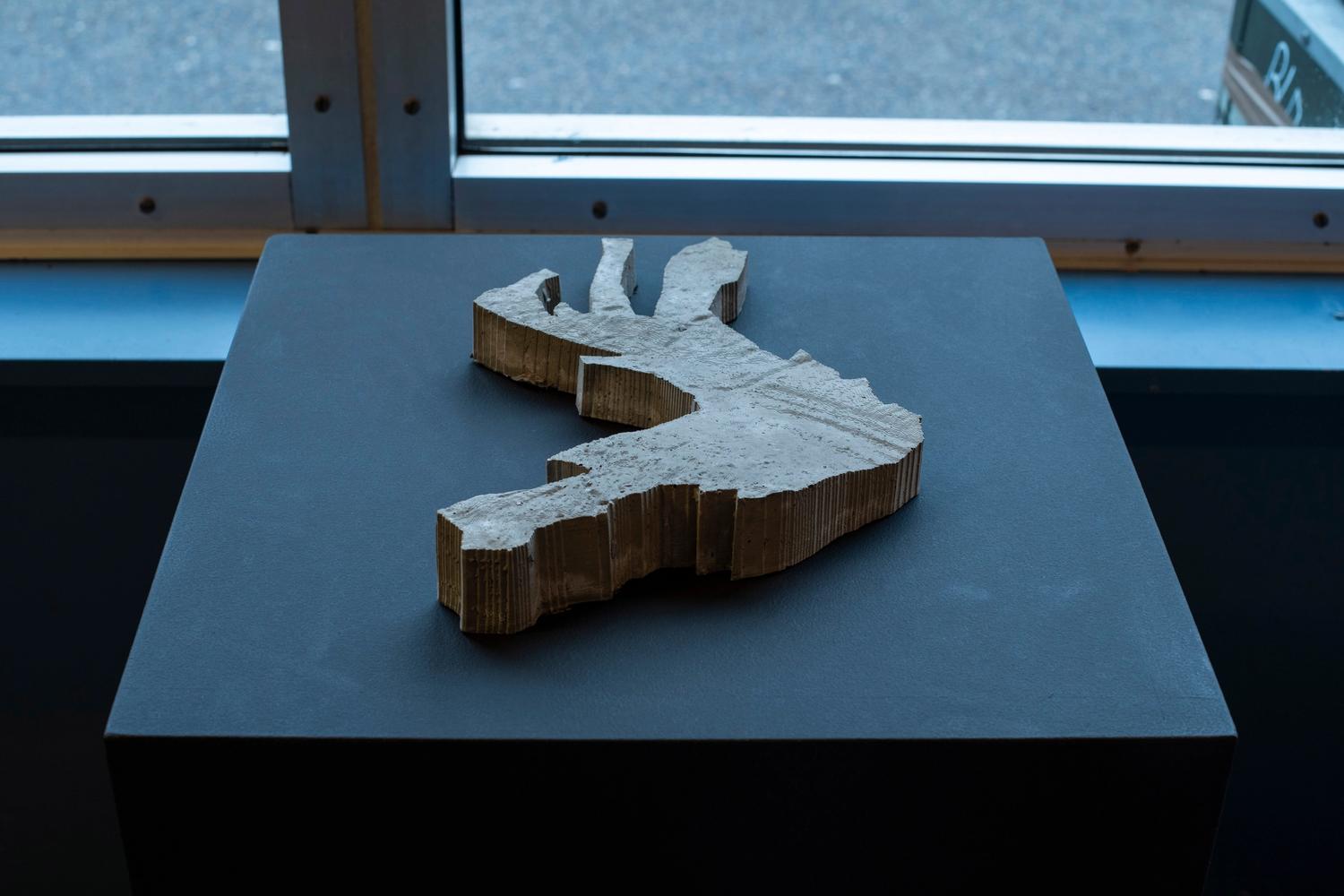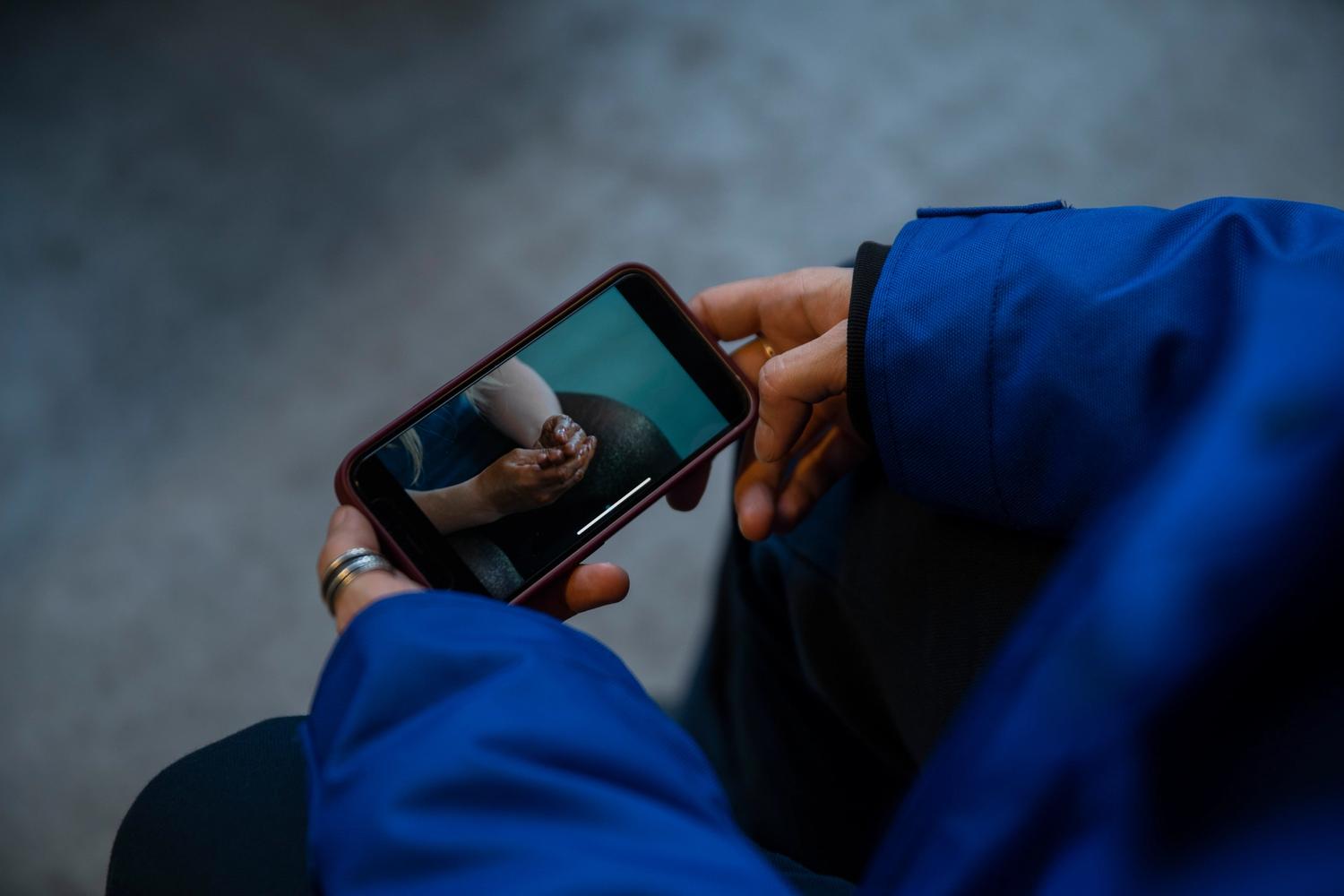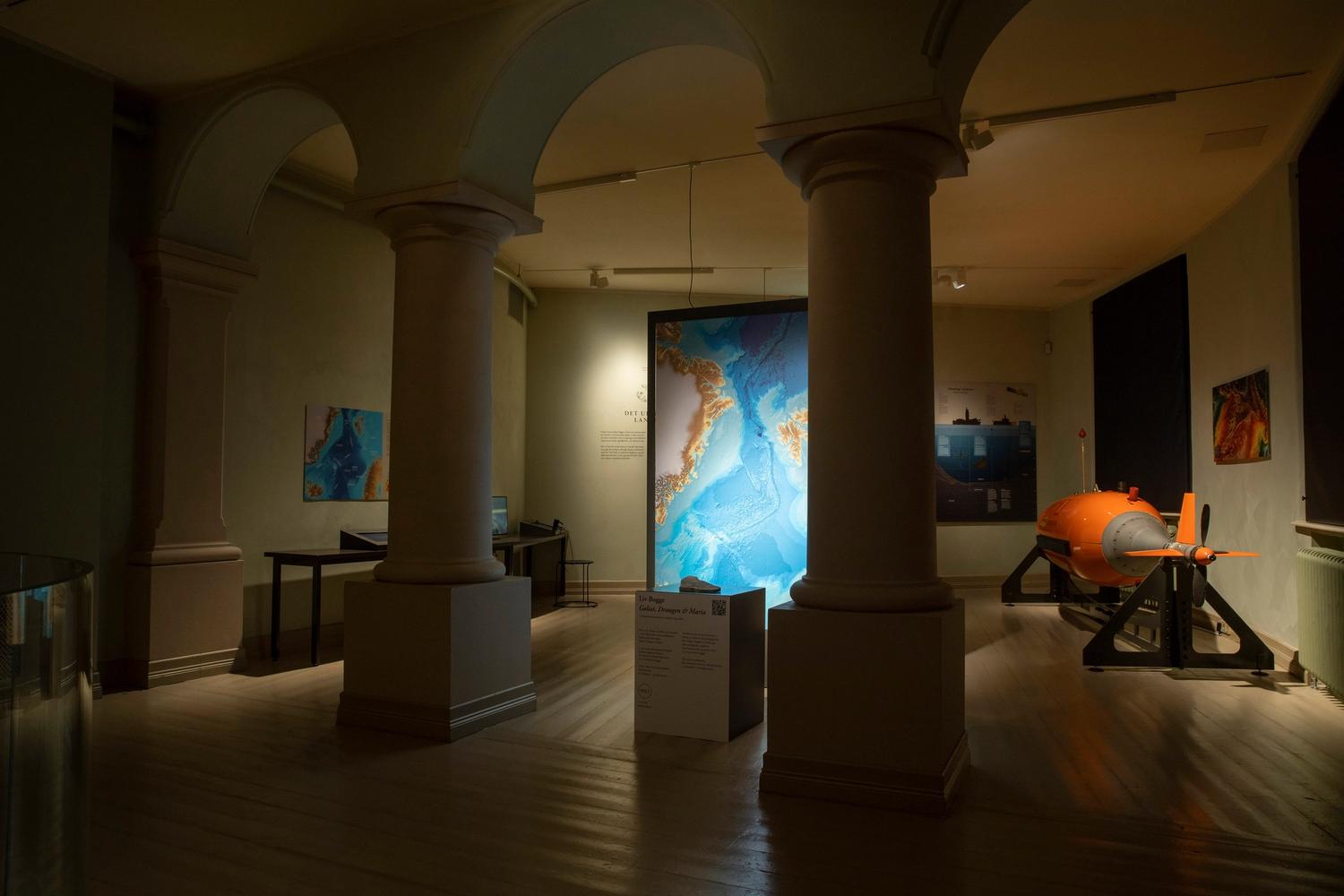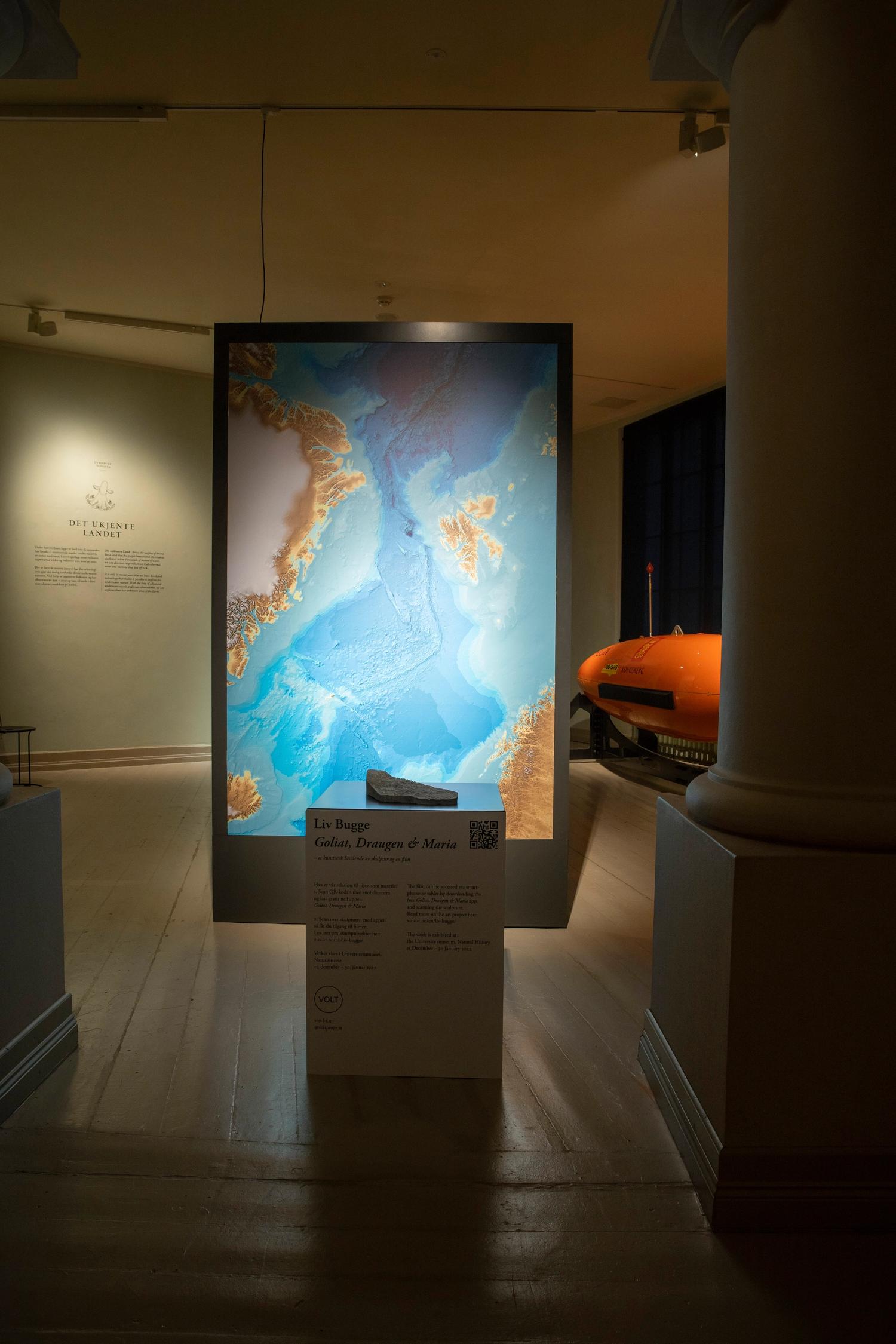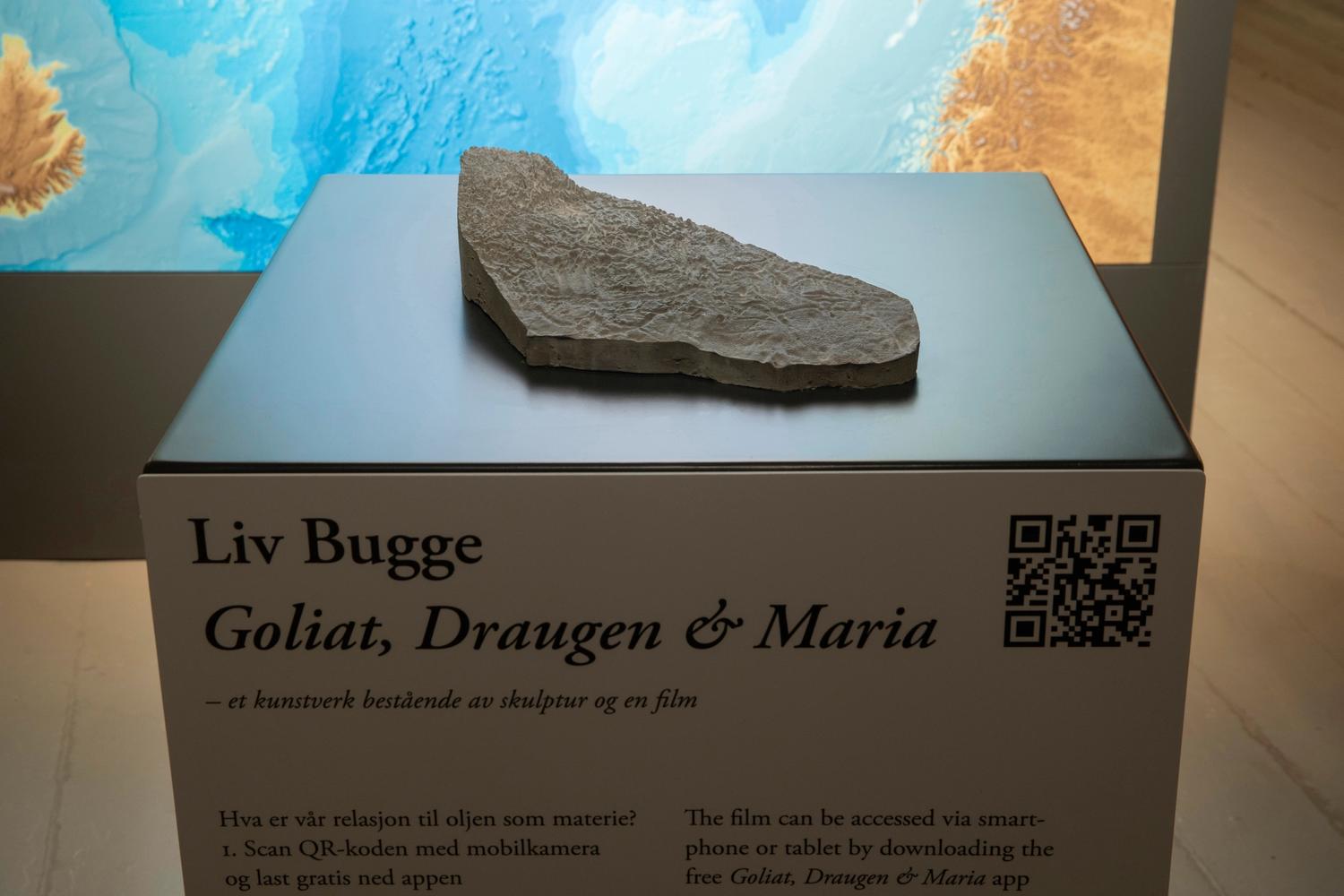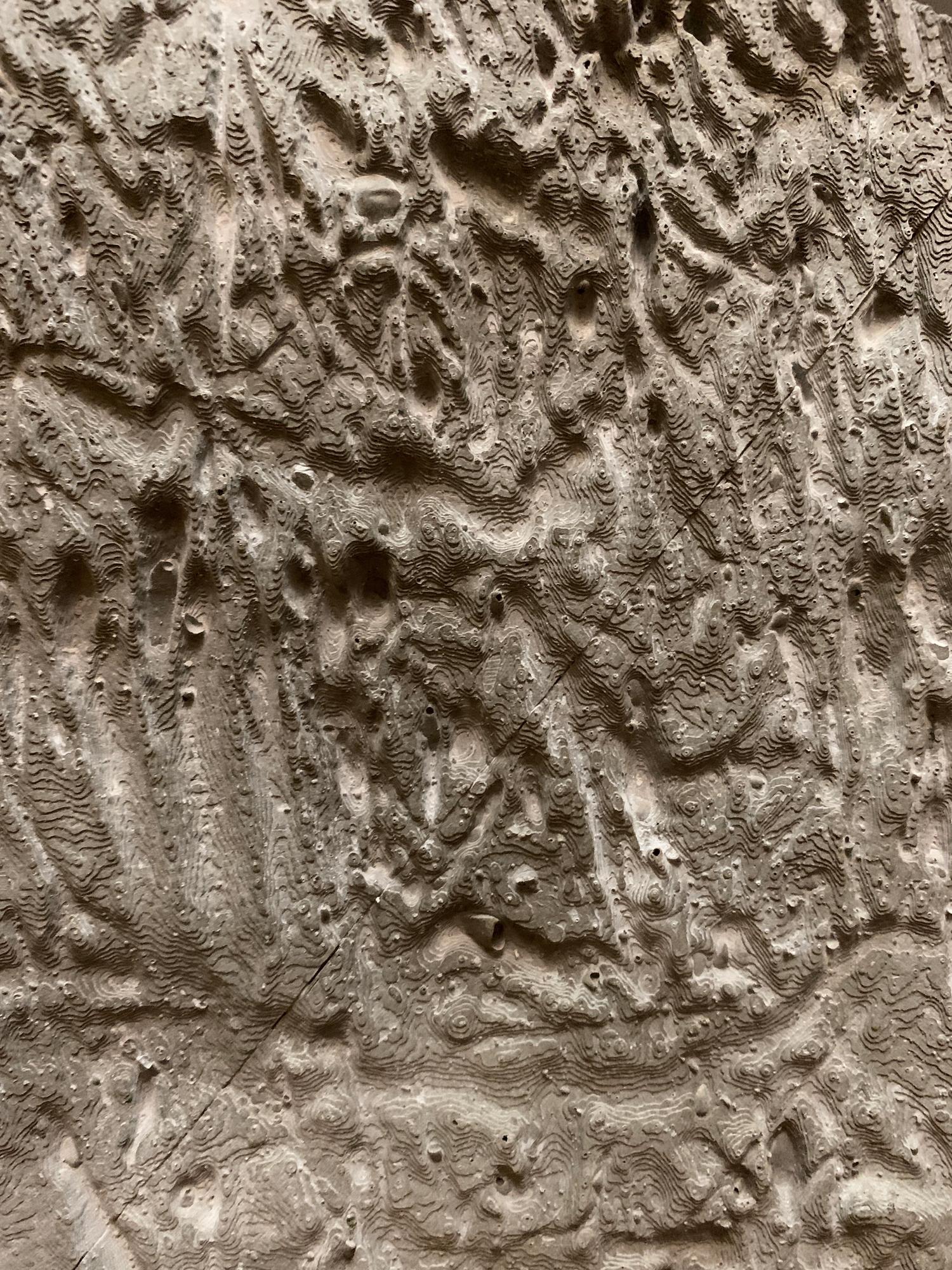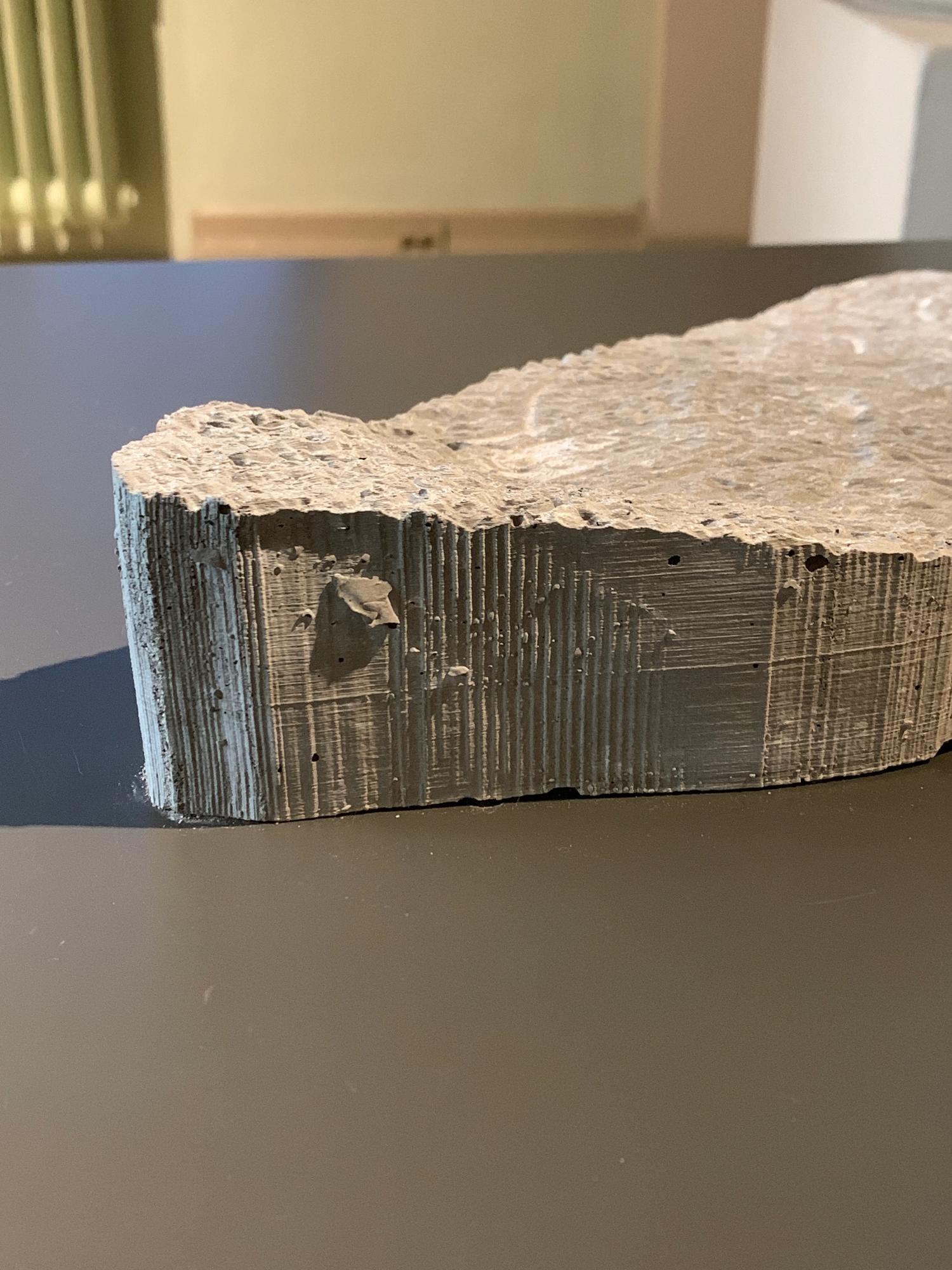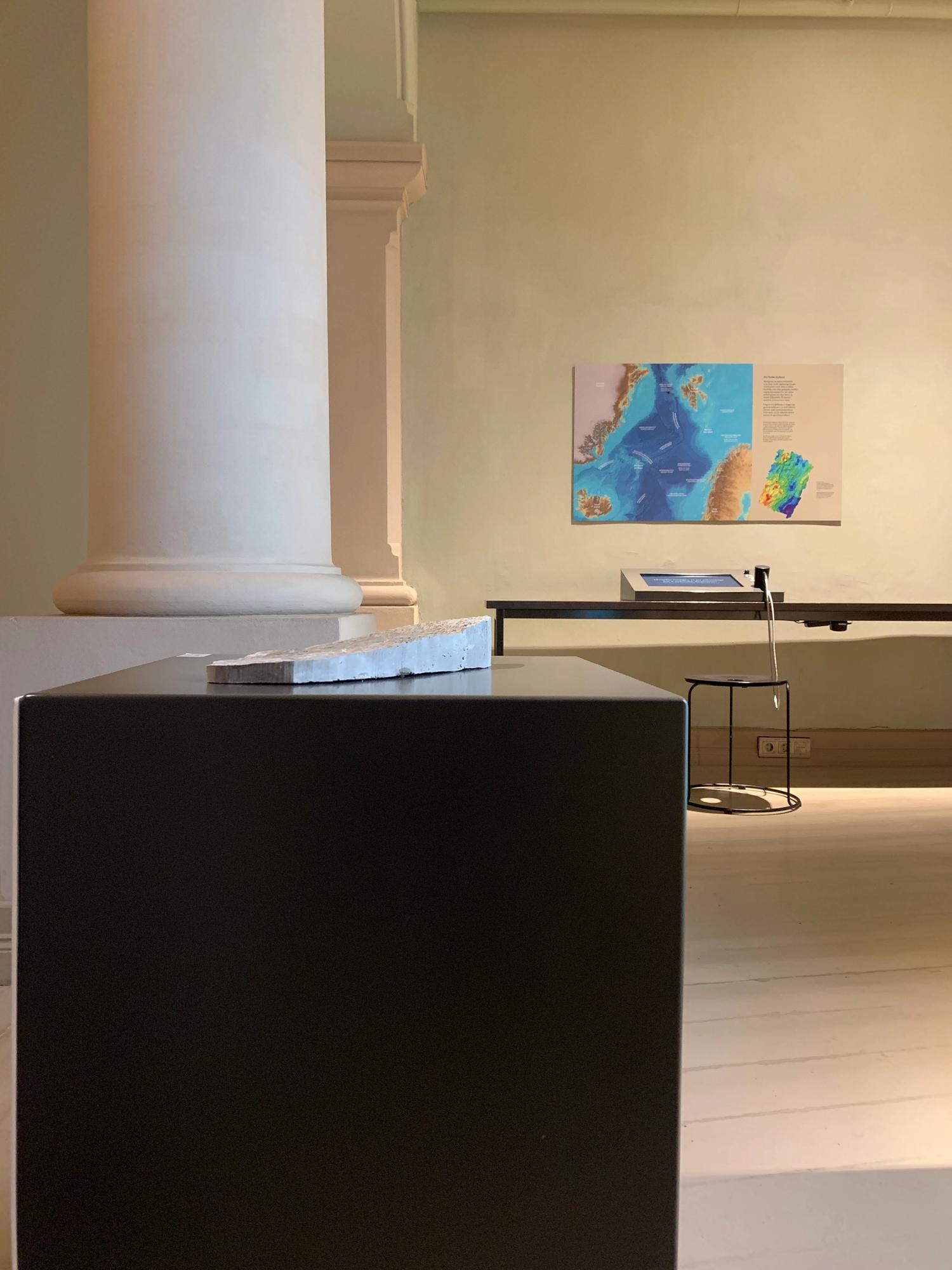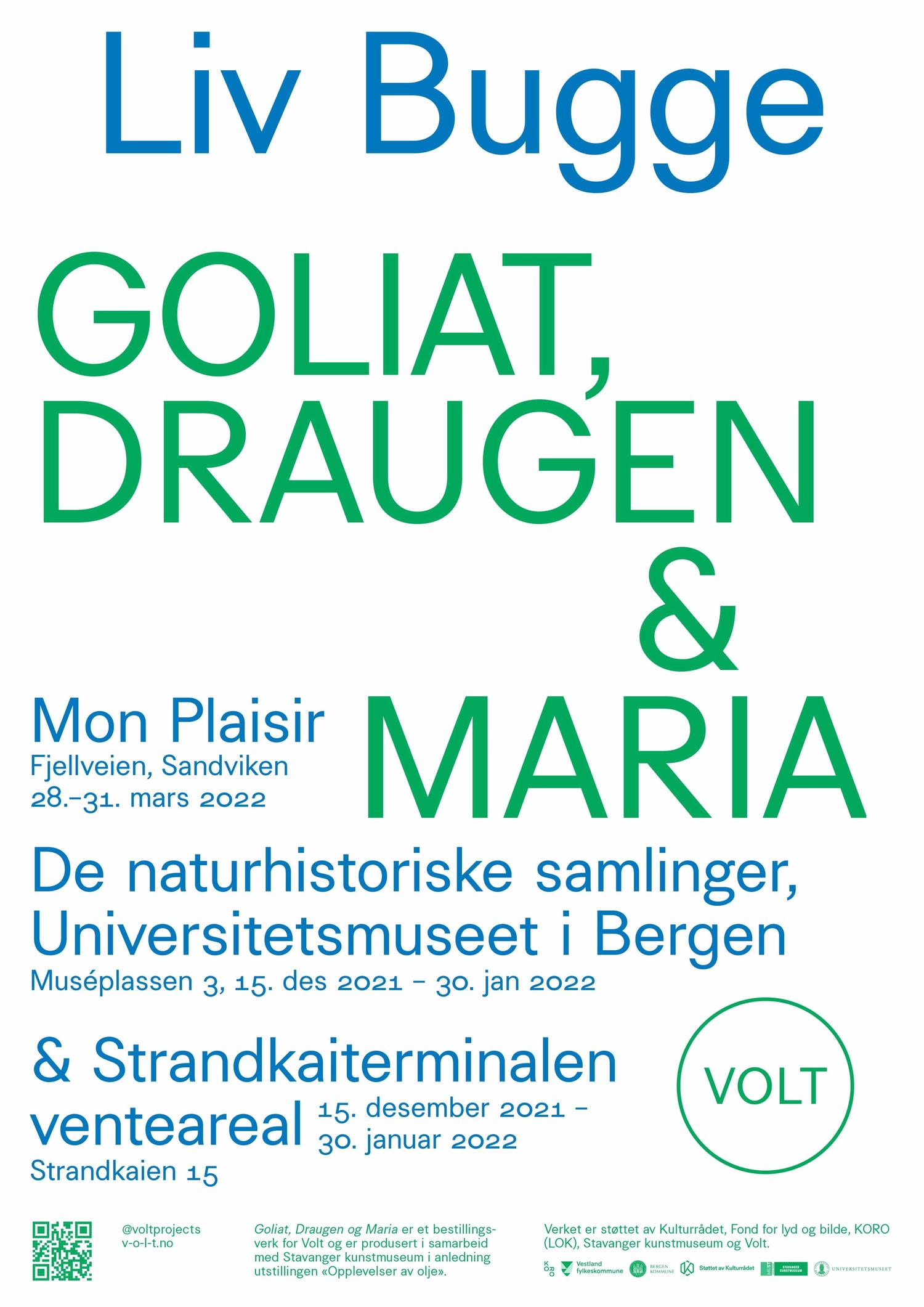Liv Bugge’s latest work Goliat, Draugen & Maria comprises three sculptures and a film. Cast in moulds made from 3D-printed models of marine landscapes, the sculptures show the topography of the seabed (bathymetry) in three of the few oilfields on the Norwegian Continental Shelf with publicly available geodata: Draugen and Maria on Haltenbanken in the Norwegian Sea and Goliat in the Barents Sea. The sculptures are on display at the Natural History Collection and the Strandkaiterminal Waiting Room in Bergen throughout December and January, and at Mon Plaisir in Sandviken in March.
Goliat, Draugen & Maria is concurrently being shown as part of the exhibition Experiences of Oil at Stavanger Art Museum, with the sculptures on display at Fiskepirterminalen, Sølvberget Library and Culture House and Stavanger Art Museum.
The work’s accompanying film can be accessed via smartphone or tablet by downloading the free Goliat, Draugen & Maria app and scanning one of the sculptures. Using augmented-reality technology, the app enables virtual elements to be hosted within real-world settings.
In Goliat, Draugen & Maria, Bugge looks to explore our relationship with oil by posing the question: “What points of contact do we have with crude oil other than as refined end-products?” In Norway, as in other oil-producing nations, oil affects the national narrative, language, politics and economy. Bugge’s film documents the reactions of a group of people as they encounter crude oil from the Vigdis field for the first time.
